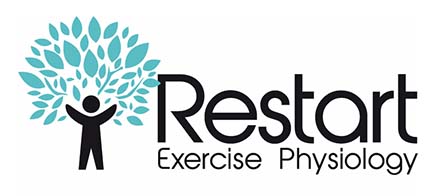The past 12 years of working with patients as an Exercise Physiologists has taught me many things (an exhaustive list would make for some lengthy reading). Perhaps the most important part of the task of helping a patient is to educate and empower them to find a way to incorporate exercise into their every day life. As EPs we can provide the most evidence-based and impressive exercise program, but if the patient doesn’t enjoy it, finds it overwhelming, or can’t find a way to add it into their daily schedule, it’s not going to stick.
So here are my 6 practical strategies to help make regular exercise stick:
1. Find a form of movement you enjoy
If you enjoy playing a certain sport, or lifting weights versus aerobic exercise, then stick with that. If you look forward to moving and genuinely enjoy it you will more likely stick with it long-term. Simple concept, but many of us persist with exercises we feel we ‘should’ be doing, what works for others, or the latest fad that was featured on morning TV or Instagram.
2. Start small and build-up steadily from there
Set a target of getting 1% closer to your goals each day. This can help take the pressure off and feeling like you have a mountain to climb to achieve your goals. If you achieve this every day consistently, the positive effects of compound interest will see your goals take shape sooner that you can imagine!
3. Set realistic goals
When you know where you want to go, it’s easier to create a roadmap to get there. We’ve all likely set financial, relationship or career goals – treat your health similarly and track your progress. SMART goals provide a structure to establish Specific, Measurable, Attainable, Realistic and Time-bound targets that can be measured and ticked off ✅
4. Find an exercise buddy
Ask a friend, family member or neighbour to join you for your daily walks or simply check-in on your progress. We all benefit from accountability – this can help you move and be active on the inevitable days when you don’t necessarily feel like it. The side note of catching up with someone you like and appreciate will add a further positive to the process of moving and being physically active.
5. Discover the best time of day to exercise for you and your unique body
Look around the room – of the people you can see, who looks exactly like you in terms of shape and size? I daresay not many, if any at all. The point here is that we are all unique – we know this already, but can also succumb to the advice that we should all do ______ to achieve benefit. Our body’s ‘chronobiology’ (a field of biology that studies our body’s natural rhythms) is unique to us, meaning a morning workout that works great for your best friend may leave you tired and cranky for the rest of the day. Swap that workout to the afternoon however and voila, physical and mental benefits galore!
When starting out with a new exercise plan, discover if you are more energised by exercising earlier, or later in the day? Experiment with both to begin with and be intuitive to your body’s response.
6. Incorporate exercise and movement into your everyday life
This strategy will make activity more incidental, rather than feeling like you need to do your day’s activity in one bout. Practical examples my team and I recommend are:
- pick up a 10kg + kettlebell 5x every time you walk past the fridge;
- perform bench push-ups whilst you cook dinner;
- balance on one-foot whilst you brush your teeth; and
- park further away and walk the extra distance.
These ‘accumulators’ will surprise even yourself when you discover you performed 50 kettlebell squat reps (500kg worth) without even breaking a sweat!
As Exercise Physiologists, we’re all about simplifying exercise and finding the best exercise program based on your health history, likes and dislikes, and current lifestyle. The above six strategies are a great way to help exercise stick and see you make tangible and sustainable progress to your health and fitness goals.
Happy exercising,
Luke

0 Comments